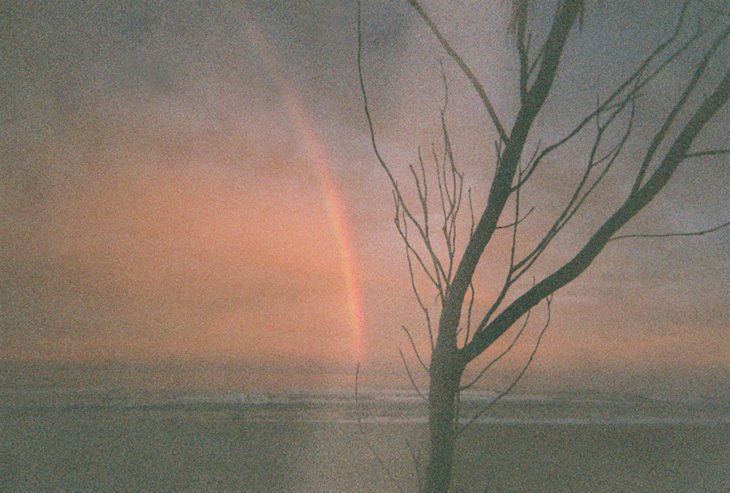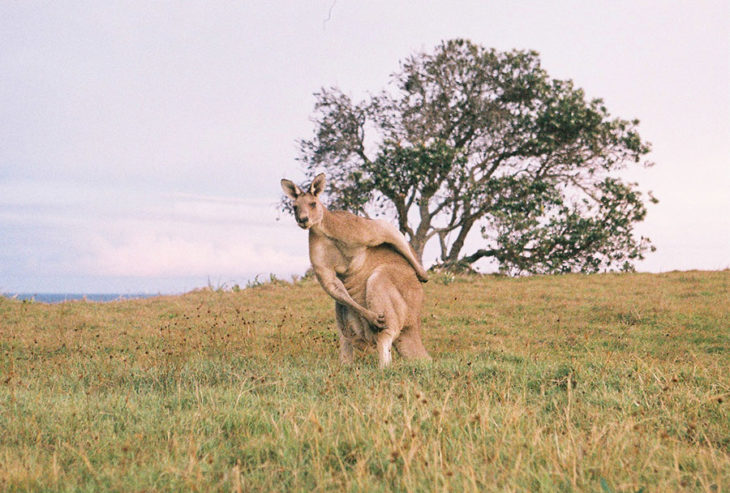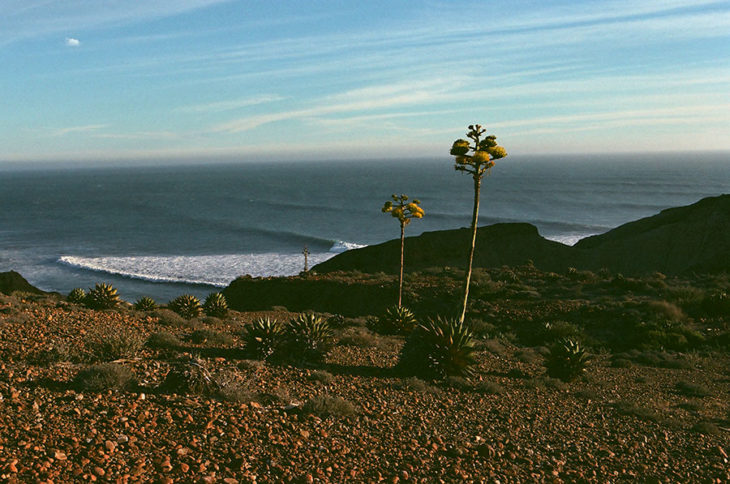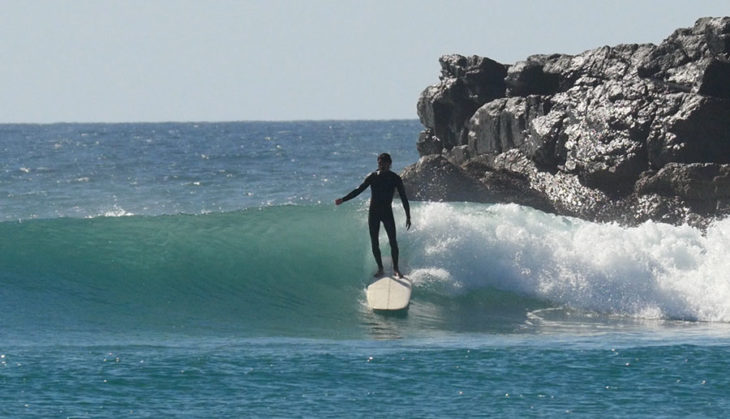{english below}. Jack Coleman es uno de los cineastas más interesantes de esa nueva generación que se acerca a reflejar la nueva escena surfer y lo hacen desde una perspectiva más personal. Todo en Frequency Zone esta cuidado hasta el último detalle, desde la banda sonora, a los surfers que participan en ella. Zone Frequency es un viaje personal al corazón del surf más auténtico, donde volver a descubrir la belleza y la libertad que te proporciona el surf cuando le quitas todo lo accesorio.

Ahora parece que hay más interés entre diferentes directores por mostrar otra cara de la industria del surf y que es posible practicarlo con tablas diferentes y quizás una forma diferente de ver esta forma de ver la vida que es el surf. ¿Qué es lo que te interesa del surf alternativo?
Piensa que es eso, el surf no es una industria. El surf es una elección de vida, un viaje de vida que da para siempre incondicionalmente. Siento que siempre he sido un poco un inadaptado, y nunca me he dejado llevar por la multitud. El surf te da opciones, diferentes tablas, diferentes técnicas, y sobre todo, diferentes sentimientos. Yo sólo he seguido lo que lo que me hace sentir bien personalmente. Desde mis primeros días de bodysurfing en el shorebreak, a montar en una bodyboard a mi transición al shortboarding, fue una progresión natural por la que pasamos la mayoría de nosotros. Después de años de ser influenciado por la corriente principal, es decir, el shortboarding del circuito mundial, etc., me aburrí del enfoque y sentí que había llegado al final del camino a finales de mi veintena. Entonces descubrí el longboard, y todo cambió. Me costó 15 años darme cuenta de que de que el surf era lo que te hacía sentir mejor cuando estabas en el agua, no lo fuerte que se surfea en una tabla corta. Desde mi experiencia con tablas más largas que evolucionaron en montar fishes y en numerosos shapes diferentes y ahí es cuando me di cuenta de que mi vida de surf estaba en un camino completamente nuevo y fue emocionante. Usar tablas de todas las formas y tamaños me dio la oportunidad de divertirme en el océano a diario, y eso es lo que es para mí.

¿Fue la fotografía la que te llevo al cine?. Es un paso que dan muchos cineastas, enamorase de la idea de crear imágenes y después darle movimiento…
Sí, la fotografía fue el catalizador para hacer películas. Después de ser fotógrafo profesional durante 10 años, me di cuenta de que con una foto se puede crear una “falsa realidad” con facilidad, que el movimiento era más real. Nada más real que el surf. Cada ola es única y un nuevo lienzo que nunca se replica, así como cada surfista, cada uno dibuja sus propias líneas individuales y es algo hermoso.
En Inner wild pones en valor el surf femenino, haciendo una reivindicación muy necesaria de éste. ¿Crees que está olvidado por la industria del surf?
No, no pienso eso en absoluto. Hay mucha historia en el surf femenino si vas a buscarla. De hecho, se está haciendo mucha historia ahora mismo. Me parece que el circuito femenino es más interesante que el masculino en este momento, y creo que hay un montón de gente que siente lo mismo.

Has dedicado mucho tiempo a documentar la escena de Newport. ¿Qué tiene de especial la escena de allí?
Bueno, fue más o menos la zona en que nací. Si te fijas, realmente mucha historia del surf ha salido de la zona de Newport Beach. Me gustaban las olas allí y las opciones eran suficientes para mantenerme feliz en el agua. Tienes the Wedge, Blackies en invierno, todos los embarcaderos, the Point…sobre todo era una especie de un lugar para estar en verano (me encanta el verano) y se ajustaba a lo que yo le pedía a vivir junto al mar. No fue una intención documentar el surf de Newport, más bien fue un momento vital de todos nosotros que vivíamos en la misma zona. Fue una época muy emocionante, y estoy siempre agradecido de haber formado parte de ella. Es el hogar de la “industria del surf”, así que supongo que me dio acceso a algunos de los mejores surfistas del planeta, y ahí es donde empezó todo para mí. Desde entonces me he mudado de Newport y ahora vivo en San Diego.
Trabajar con película es desde luego algo diferente e impone otro ritmo. ¿La elección de usar película es una cuestión estética y quizás también emocional?
Cuando empecé a fotografiar el surf en 2009, estaba en la escuela de arte y fotografiar en película era lo que estaba haciendo, y grabar con película era todavía una opción asequible. Las cámaras digitales estaban empezando y yo era una especie de purista y no quería hacer el cambio a digital todavía. Sí, la estética, las texturas, los colores y la sensación de la película me aportaron una conexión emocional con lo que estaba filmando. Cada toma era algo con lo que tenías que vivir, eso era emocionante y como mencionaba antes, aportaba realismo a lo que intentaba proyectar. Lo era todo para mí.

En un proyecto tan ambicioso como Zone Frequency. ¿Cómo ha sido la elección de los surfers que salen en el film?
El reparto de las películas de surf es un reflejo de la visión que tienen los cineastas del arte del surf. Cada miembro del reparto representa un aspecto diferente de lo que creo que es y debe ser el surf. Cada surfista aporta su propio enfoque a las olas y lo más importante es que esperaba tener un mensaje positivo subyacente y es lo que cada surfista aporta a su propia vida y a la de los que le rodean. Las películas de surf pueden a veces estar vacías de sustancia y eso es justo lo que no quiero hacer con mis películas. Quiero algo que se pueda proyectar dentro de muchos años y que siga teniendo un impacto positivo en aquellos que lo están viendo. Me gusta pensar que el elenco de “Frequency” son todos personas increíbles, no sólo en el agua, sino también fuera. También me di cuenta de que a lo largo de la vida el surf no cambia, sigue siendo la fuerza vital para los surfistas que realmente aman el arte, mostrando cómo la familia y la amistad es el núcleo de la existencia de cada surfista y de nuestra conexión con el océano.

Se cumplen 40 años de Morning of the Earth, que supone una película paradigmática para conocer a esa generación de surfers que nos traían otra forma de surf y sobre todo otra forma de vida. ¿Uno de los problemas del surf moderno que ya no es una alternativa de vida?
Morning of the Earth fue un cambio de juego para mí y para muchos surfistas modernos. Al mirar hacia atrás en películas como esta, nos ha dado una lección sobre la pureza del surf y un profundo amor por lo que nos aporta como surfistas. La película para que conectes con ella te hace plantearte la pregunta ¿qué es el surf para ti? Puede ser un viaje vital con alma que nos conecta con la tierra como ninguna otra actividad puede hacerlo. Conecta todos los puntos: cuerpo, mente y espíritu.
¿Qué te gustaría que resonara de Morning of the earth en tu película?
Sólo puedo y espero que en mis películas la gente obtenga esa sensación de libertad que el surf puede aportarte y hace sentir, y que te hace sentir que la vida tiene que ver con la familia y la amistad y que el surf puede ser una forma de crear un viaje de vida espiritual que siempre te recompensa.

¿Visualmente qué otras películas y directores han influido en tu trabajo?
George Greenough es el rey, tiene su propio nivel. Crystal Voyager, Innermost Limits de Pure Fun me marcaron mucho cuando empecé a ver películas de surf antiguas. También me influyó el material de Jack McCoy y Taylor Steele cuando estaba con mi shortboard a finales de los 80 y los 90. La mayoría de las veces se trata de material de surf moderno con un poco de humor y arte entrelazados
¿Tienes pensado realizar películas que no estén relacionados con el surf?
Las películas que hago son básicamente películas de surf, quiero que todo gire en torno al surf en primer lugar, para que pueda ver su influencia en mi trabajo. He pensado en ello y creo que es una pregunta que no puedo responder en este momento. Creo que ser un realizador de películas de surf me hace feliz y si tuviera que hacer un proyecto no relacionado con el surf, me parecería algo que no resonaría en mí.

Tus películas están hechas de forma totalmente independiente, sin el respaldo de ninguna marca. ¿Qué es lo que te interesa de trabajar de forma autogestionaria?
Siento que es mi manera de devolverle al surf lo mucho que me ha dado. Liberarse de intereses corporativos es sobre lo que trata el surf. Al igual que las primeras películas de surf, todo gira en torno al surf y a los que lo capturan. Ser independiente me ha dado mucha libertad para filmar e ir a donde quiero y fotografiar a los surfistas que me inspiran dentro y fuera del agua. Tomé una decisión consciente cuando empecé a tratar de ser tan independiente como pudiera y fue la decisión correcta para mí mirando hacia atrás.
No es muy habitual escuchar a Can como banda sonora en una película de surf, hablemos de la selección musical. ¿Cómo trabajas estos aspectos en tus películas?
El sonido lo es todo. Siempre me ha gustado crear listas de reproducción desde mi adolescencia, en la época de las cintas de casete, hasta los tiempos del CD. A la hora de crear una banda sonora entran en juego muchos factores, debe ser una montaña rusa con altibajos, un escape emocional que fluya hacia el surf y que cada canción se adapte al enfoque de los surfistas. Siento que hay mucha música estupenda que nunca se escucha, y yo quiero llevarla a ellos. Siempre estoy buscando y aprendiendo sobre artistas de todo el mundo que siento que pueden traer algún tipo de vibración positiva a los oídos de los espectadores. Reservo canciones para surfistas particulares, y es una obsesión constante, así como una gran parte de un aspecto particular de mi vida. Tengo una enorme biblioteca de canciones con sustancia y flow, que las tengo reservadas para la sección adecuada. Estoy muy orgulloso de mis elecciones musicales para mis películas y siento que las bandas sonoras son el pegamento que mantiene unidos al surf y a los surfistas.

Malibú es uno de los sitios míticos del surf, pero el peligro de los mitos es que se pueden tergiversar o ya simplemente es un nombre vacío. ¿Cómo es la escena en Malibú?
No estoy muy metido en la escena de Malibú, aunque voy probablemente cinco veces al año. Creo que, en el fondo, es un lugar icónico para el surf con una gran ola. No hay muchos puntos con esa calidad en California, así que como ola se sostiene por sí misma. Es un placer bajar hacia el muro y pasar el rato con tus amigos y ver el pico tan caótico, pero que al fin y al cabo es una belleza. También es raro tener acceso con tu vehículo a la playa y poder estar de fiesta con tus amigos, almorzar algo y volver a surfear. En definitiva, es una gran ola y una playa divertida. En cuanto a la escena, no estoy en ella, pero participo en la adoración del sol y las olas y siempre me encanta ir allí un par de veces al año.
www.thezonesurfmovie.com
Instagram








English:
Jack Coleman.
Enter the Zone Frequency
Jack Coleman is one of the most interesting filmmakers of this new generation that approaches to reflect the new surfer scene and do it from a more personal perspective. Everything in Frequency Zone is taken care of down to the last detail, from the soundtrack to the surfers that participate in it. Frequency Zone is a personal journey to the heart of the most authentic surfing, where you can rediscover the beauty and freedom that surfing gives you when you remove all the accessories.
Now it seems that there is more interest among different directors to show another face of the surfing industry and that it is possible to practice it with different boards and maybe a different way to see this way of seeing life that is surfing. What is your interest in alternative surfing?
Think it’s just that, surfing is not an industry. Surfing is a life choice, a life journey that forever gives unconditionally. I feel like I’ve always been a bit of a misfit, and never just went along with the crowd. Surfing gives you options, different boards, different techniques, and above all, different feelings. I’ve just followed what felt good to me personally. From my first days of bodysurfing in the shorebreak to then riding a bodyboard to my transition into shortboarding, it was a natural progression that most of us go through. After years of being influenced by the mainstream i.e. shortboarding world tour etc., I grew bored with the approach and feltId reached the end of the road in my late twenties. Then I found longboarding, and everything changed. It took me15 years to realize that surfing was all about what made you feel best when you were out there in the water, not how hard you shred on a shortboard. From my experimenting with longer equipment that evolved into riding fishes and numerous different shapes and that is when I realized my surfing life was on a completely fresh track and it was exciting. Riding boards of all shapes and sizes afforded me the opportunity to have fun in the ocean on a daily basis, and that is what it is all about for me!
Was it photography that took you to the movies?. It’s a step that many filmmakers take, falling in love with the idea of creating images and then giving them movement
Exactly you pretty much answered the question for me:} Yes photography was the catalyst to making films. After being a professional photographer for 10 years I noticed with a photo you can create a “false reality” easily, as I progressed it felt like motion had more of a realness to it. Nothing more real than surfing. Each wave is unique and a new canvas that is never replicated, as well as each surfer, they each draw their own individual lines and it’s a beautiful thing.
In Inner wild you put in value the feminine surfing, making a very necessary claim of it. Do you think it is forgotten by the surfing industry?
No, I don’t think that at all. There is lots of history in women’s surfing if you go seek it out! Lots of history being made right now actually. I find the women’s tour more interesting than the men’s at the moment, and I feel there is a ton of people who feel the same.
You’ve spent a lot of time documenting the Newport scene. What’s so special about the scene there?
Well, it was kinda regionally where I grew up, when you look into it there is actually lots of surf history that has come out of the Newport Beach area. I liked the waves there and the options were enough to keep me happy in the water. Got the Wedge, Blackies in the winter, all the jetties, the point and I think most of all it was kinda a summer spot to be, I personally love summer, and it fit what I wanted out of living by the ocean. It was not a choice to be documenting Newport surfing, more a time in all of our lives that were subjected to living in the region. It was a pretty exciting time around there, and I am forever grateful to have been a part of it. It is the home of the “surf industry” so I guess it gave me access to some of the best surfers on the planet, and that’s where it all started for me. I ve since moved on from Newport and now am living in San Diego.
Working with film is certainly something different and imposes another rhythm. Is the choice to use film an aesthetic question and perhaps also an emotional one?
When I started shooting surfing in 2009 I was in art school and shooting on film what I was doing, and shooting motion film was still an affordable option. Digital cameras were just beginning and I was sort of a purist and didn’t want to make the switch to digital yet. Yes, the aesthetic, textures, colors, and feeling of film did bring an emotional connection to what I was shooting. Each shot was something you had to live with, that was exciting and like I was mentioning earlier, it brings a realness to what I was trying to project.
In a project as ambitious as Zone Frequency. What was the choice of the surfers in the film like?
It was everything to me. The cast in surf films are a reflection of the filmmakers vision of the art of surfing. Every cast member represents a different aspect o f what I think surfing is and should be. Each surfer brings their own approach to waves and most importantly I was hoping to have a positive underlying message that each surfer brings to their own lives and those around them. Surf movies can sometimes be void of substance and that Is all I want to do with my films now, something you can throw on in many years to come and still have a positive impact on those who are watching it. I’d like to think the cast in the Frequency are all amazing people not only in the water, but on land. I also realized in surfings life journey you grow old and surfing doesn’t change, it still is the life force for surfers who truly love the art of it, showcasing how family and friendship is the core aspect to each surfers existence to our connection to the ocean.
It’s been 40 years since Morning of the Earth, which is a paradigmatic film to meet that generation of surfers who brought us another way of surfing and above all another way of life. One of the problems of modern surfing that is no longer an alternative to life?
Morning of the Earth was a game changer for me and as well many modern surfers. By looking back into films such as this it has given us a lesson on the purity of surfing and a deep love of what it brings to us as surfers. The film for those who connect with the movie makes you ask yourself the question, what is surfing to you? It can be a soulful life journey that connects us to the earth that no other activity can do. It connects all the dots. Body, Mind, and Spirit. I can only hope that in my movies people get that feeling of freedom that surfing can bring to you, and it makes you ask yourself those questions as to what surfing is to you.
What would you like to resonate from Morning of the Earth in your film?
That life is about family and friendship and surfing can be a way to create a spiritual life journey that always gives back.
What other films and directors have influenced your work?
George Greenough is the king, on his own level. Crystal Voyager, Innermost Limits of Pure Fun made a huge mark on me when I started watching older surf films. I was also influenced by Jack McCoy & Taylor Steele’s stuff when I was in my shortboard days in the late 80s & 90s. Mostly just straight performance surf stuff with a bit of humor and art intertwined. The films I make are basically performance surf movies, I want to make it all about the surfing first and foremost so I can see their influence in my work.
Do you plan to make films that are not surf related?
I´ve thought about it a bit and I think that is a question I can’t answer at this time. I do think that being a surf film maker brings me happiness and if I was to do a project non surf related seems like something that doesn´t really resonate with me.
Your films are made in a totally independent way, without the support of any brand. What interests you about working in a self-managed way?
Yah I feel it is my way of giving back to surfing which has given so much to me. To be free of corporate interest is what surfing is all about. Much in the way of the first surf movies, it’s all about surfing and those that loved to capture it! To be independent has brought me so much freedom to shoot and go where I want to, and shoot the surfers that inspire me in and out of the water. Made a conscious decision when I started out to try and be as independent as I could and it was the right decision for me looking back.
It is not very common to hear Can as a soundtrack in a surf movie, let’s talk about the musical selection. How do you work these aspects in your movies?
Oh man sound is everything! I’ve always loved putting together playlist since my early teens in the cassette tape days up to the CD times. When coming together with a soundtrack many factors come into play, it should be rollercoaster with up sand downs, an emotional escape that flows to the surfing and each song play to the surfers approach. I feel there is so much great music that is never heard, and I want to bring that to them! I’m always looking and learning about artist from around the world that I feel can bring some type of positive vibration into my viewers ears. I save songs for particular surfers and some songs for particular locations, it’s a constant obsession as well as a huge part of a particular part of my life. I have a huge library of songs I feel have substance or flow that I have tucked away for the right section. I’m very proud of my musical choices for my films and feel like the soundtracks are the glue that holds together the surfing and surfers.
Malibu is one of the mythical places of surfing, but the danger of the myths is that they can be distorted or it is simply an empty name. How is the scene in Malibu?
I’m not too much into the Malibu scene, although I do make the trip up probably 5 times a year. I think at its core, it’s an iconic surf spot with a great wave! There are not too many quality point breaks in California so as a wave it stands on its own. It’s a treat to go down to the wall and hang with your friends as you watch the line up do its thing, mostly chaotic but a beauty to watch for sure. Also rare to have access to your vehicle in the lot to pow wow with friends, have some lunch, some laughs, and go back out surfing. All in all, it’s a great wave and a fun beach. As for the scene, I’m not in it, but I partake in worshipping the sun and waves and always love going down there a few times a year!